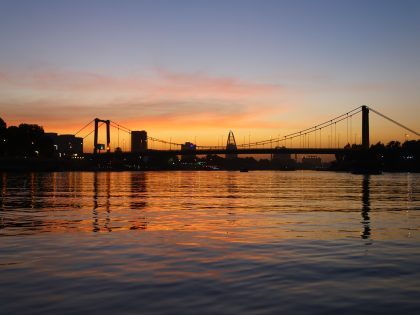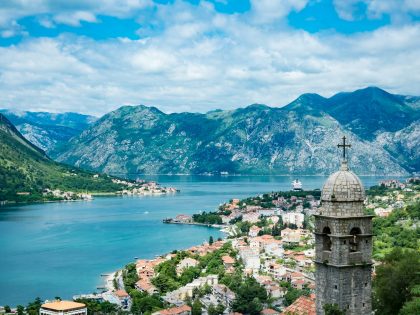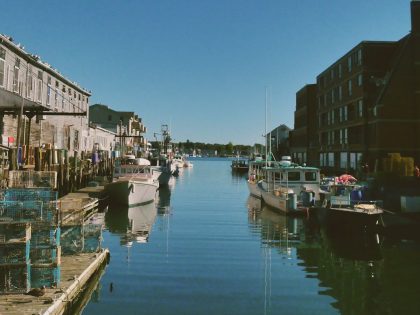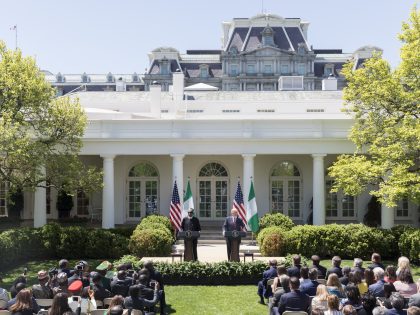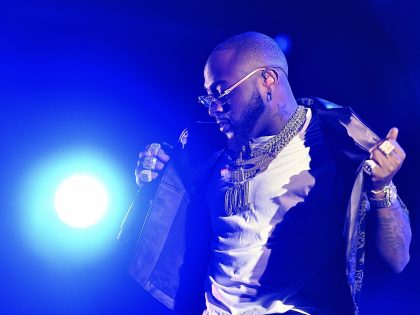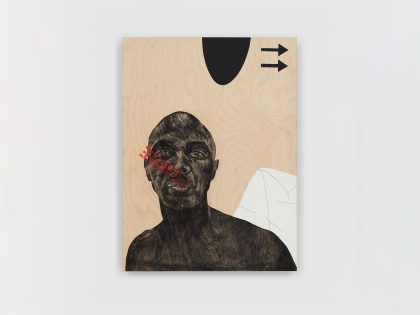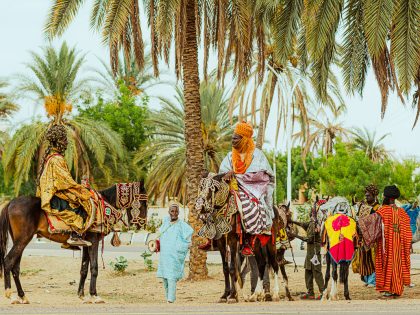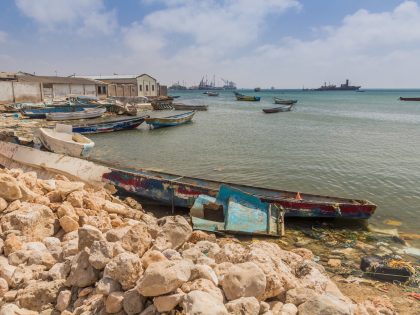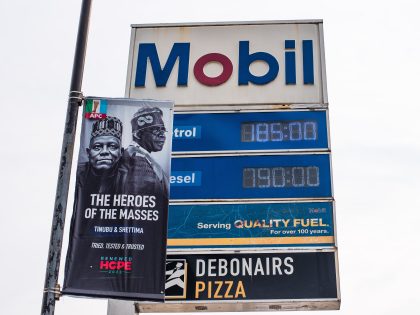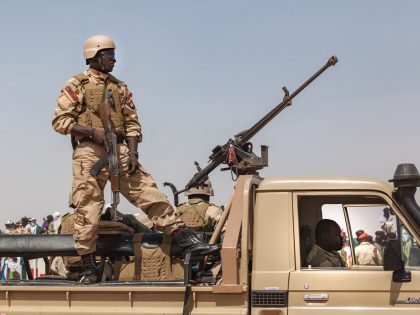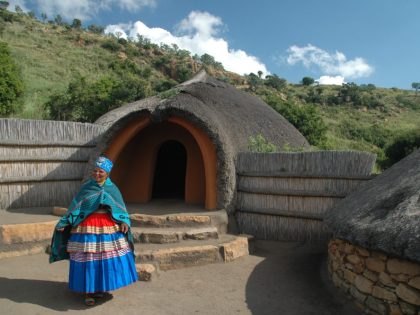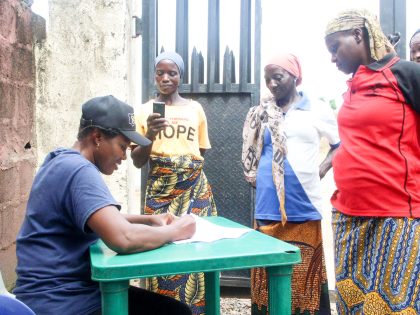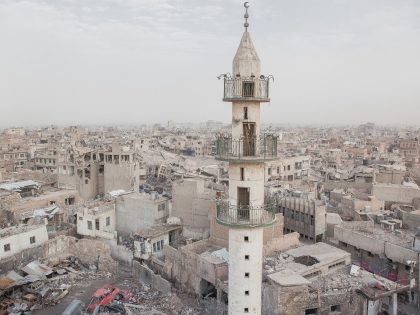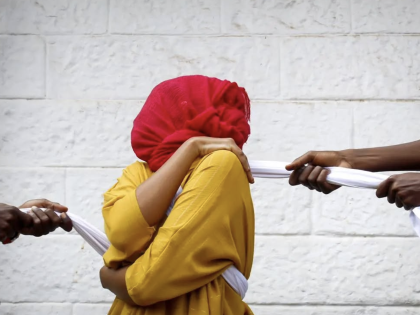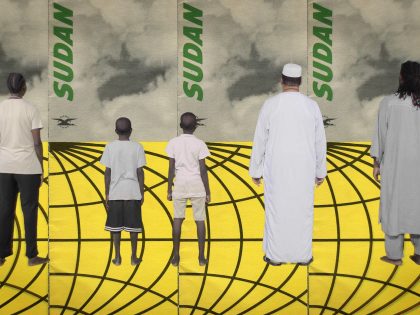The Dutch disease (and its prescription)
Even in spite of a recent history of reactionary backlash, the movement against #ZwartePiet (Black Pete) has had some success.

The Dutch blackface figure, Zwarte Piet, revived every Christmas. Image by Gerard Stolk via Flickr.
Three weeks ago, together with a group of fellow Dutch antiracist activists, I planned a trip to Dokkum, a city in the Friesland province of the Netherlands. We were protesting the Intocht, a celebration that serves as the symbolic arrival of Sinterklaas. If you’re unfamiliar with the Dutch version of Santa Claus, here he appears as an old white man on a horse along with a blackface “helper” known as Zwarte Piet or Black Pete. Black Pete was invented more than 150 years ago and bears the racist symbolism of the Netherlands’ bloody colonial past. Black Pete is acrobatic, silly and historically speaks with a caricatured Surinamese accent (an allusion to immigrants from the former Dutch colony in South America). In the weeks between the Intocht and the Evening of the Gifts, on the 5th of December children sing songs with lyrics such as “Even if I’m black as coal I still mean well.”
On the day of the protest, we never arrived. Racists blocked the highway in order prevent us from reaching the city. The police made no effort to stop the blockade. It’s not the first time that activists were prevented from protesting during the Intocht. The resurgence of the movement against Black Pete started in 2011, when two black Dutch activists, Quinsy Gario and Jerry Afriyie, were violently dragged away and arrested at the intocht for wearing “Black Pete is Racism” t-shirts. Africa is a Country covered those first protests extensively. Ever since, protests have routinely ended in mass arrests (with one hundred arrests in Gouda in 2014 and two hundred in Rotterdam last year). The arrests are usually accompanied by brutal police violence mainly aimed at black activists.
However, this year was different. This time we were not prevented from making use of our right to demonstrate by the authorities, but by a mob of Frisian racists. It shows the geographic unevenness of progress against racism in the Netherlands: outside of the larger cities in the western part of the country, there is not yet a lot of support for change. It also points to how empowered the far-right feels to interfere with anti-racist activists.
Even in spite of this recent history of reactionary backlash, the movement against Black Pete has had some success. A poll from a television program called EenVandaag showed that 68% of Dutch people want to keep Black Pete the way he is. This is down from 89% in 2011. During this year’s Intocht in Amsterdam, only Petes with soot stripes participated, while the city of Rotterdam announced it wanted to “phase out” Black Pete altogether; this year they allowed Black Petes in blackface to make up only half of the crowd. Already a number of elementary schools, mainly in the larger cities, have banned the racist caricature at the request of parents.
This is no surprise given the base of the activists in the larger cities. At the same time it reflects how the right-wing press routinely misrepresents the arguments of antiracists, and also how there is a persistent silence on racism from the nationally organized parties on the left such as the Greens and the Socialist Party.
But, the measure of success of the struggle against Black Pete cannot be measured on this front alone. In the slipstream of this struggle the Dutch black community is becoming increasingly self-organized. Some activists have set up an archive with particular attention to the black radical tradition in the Netherlands. There is more attention to our brutal colonial history and we have seen the formation of a new antiracist party led by Sylvana Simons.
This is all done in a political climate which has rapidly shifted to the right. Our national elections last March saw the entrance of a second far-right party to the parliament: Forum voor Democratie. It’s leader, Thierry Baudet warns against the “homeopathic dilution of the Dutch people,” admires Julien Blanc, the dating coach whose dating advice for men includes using force and emotional abuse and wants a re-appraisal of Dutch colonial history.
These sentiments are not limited to parliament. So, for example, the person who organized the blockade with help of the right-wing tabloid “de Telegraaf,” Jenny Douwes, has been close to rightwing Dutch politician Geert Wilders and follows American alt-right Nazi Richard Spencer on Twitter. The far-right use Black Pete to persuade white people that “their” culture is under attack from “foreigners” and the left and that they have to “defend their traditions.”
The American socialist WEB Dubois argued during the post civil war era that the formation of racism in the US afforded white workers a psychological wage. They might be terribly exploited, but at least they could feel superior to people of color. In this way plantation owners “drove… a wedge between the white and black workers.” Dubois remarks that “there probably are not today in the world two groups of workers with practically identical interests who hate and fear each other so deeply and persistently.”
The far right tries to utilize Black Pete in a similar vein. It is no surprise that the Dutch political elite has not spoken out against Black Pete. When asked about the blockade, the prime-minister of the new right wing government Rutte responded that “children shouldn’t be confronted with angry protesters.” Evidently Rutte is just fine with exposing children to racist caricatures. (The government uses anything to distract attention from the huge tax-breaks for large corporations and attacks on labor rights and livings standards of ordinary people that the new government announced.)
Confronted with this shifting terrain, there are two things that activists should be well to heed. The first is to try to offer a perspective to all those who do want change. This year’s racist blockade and subsequent response by the authorities did win a lot of new people to the cause. The popular liberal comedian Arjen Lubach’s response, is evidence of this change. However, this broad support doesn’t yet translate itself to larger mobilizations. We also need to make visible the amount of people that do want change as a measure of security from far-right and state terror during Intochten protests. (Antiracist activists are now included in the same terrorism monitors as fascist organizations.)
Secondly, because the struggle against Black Pete cannot be won within a climate in which the far right is increasingly successful at asserting their world view in the mainstream media, antiracists should see the struggle against the far-right as a central priority. In March 2018 there will be local elections and the far-right is trying to use its momentum to build bases in different cities. This will mean even more attacks on the socially marginalized, poor and immigrants in the Netherlands.
No-one has any illusions that racism in the Netherlands will disappear with Black Pete. The caricature, which reproduces ideas of black inferiority, has grown out to be one of the main symbols of racism in this country. Overthrowing these symbols, just like the Confederate statues in the US or statues of Cecil Rhodes in South Africa, is an important step in building the movements which are able to challenge all forms of oppression and exploitation.

